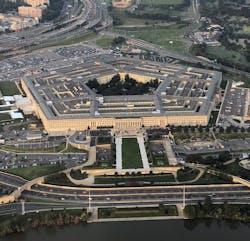US and NATO Forces Begin Final Withdrawal From Afghanistan After Nearly Two Decades of War
May 1—KABUL, Afghanistan — U.S. and NATO forces officially began their final drawdown from Afghanistan on Saturday after nearly two decades of war and as violence continued to rage across the country.
Tensions remained high throughout the day after the Taliban suggested they would launch attacks on coalition troops who remained in the country past the May 1 exit date outlined in a U.S.-Taliban deal signed last year.
Militants fired at Kandahar Airfield in the afternoon, but the assault caused no injuries or damage to equipment, Col. Sonny Leggett, a spokesman for the U.S. military in Afghanistan said on Twitter.
U.S. forces conducted a precision strike later in the evening, destroying additional rockets aimed at the airfield, Leggett said.
It was the only reported attack that may have been directed at foreign forces during the day. On Friday night, a bombing at an Afghan military base next to Bagram Airfield, the largest American installation in the country, killed one Afghan soldier and injured over two dozen others, said Abdul Wasi Rahimi, head of security at the provincial police chief's office.
A separate bombing Friday at a guesthouse in eastern Logar province killed over 20 people and wounded dozens more, Afghanistan's Interior Ministry said, highlighting the precarious security situation the U.S. and its allies are leaving behind.
No group immediately claimed responsibility for any of the attacks.
Taliban spokesman Zabihullah Mujahid tweeted Saturday that the continued presence of foreign forces violated the U.S.-Taliban deal and said Taliban fighters were waiting for their leadership to decide what actions would be taken next.
The final months of America's longest war — which began in late 2001 in response to the 9/11 terrorist attacks and has claimed the lives of more than 2,300 American service members — have largely been shrouded in secrecy. Many details of the withdrawal, including when specific bases will close and when individual partner countries will leave, have been restricted due to security concerns, NATO and American military officials said.
"At this point, we will not go into operational details, including troop numbers or timelines for individual nations," NATO's press office said in an emailed statement.
On Saturday, Afghanistan's acting Defense Minister Yasin Zia said at a news conference in Kabul that the drawdown had begun and that some bases would probably be handed over to Afghan forces within a week.
"Maybe tomorrow, in Shorabak, a small team of foreign forces will leave the area and like this, they will step-by-step leave other areas," Zia said, referring to a base in southern Helmand province.
The final drawdown follows a series of troop reductions that began shortly after the Trump administration signed a deal with the Taliban in Qatar on Feb. 29, 2020, which called for all coalition forces to leave Afghanistan by May 1, if the Taliban met vague counterterrorism pledges.
Two weeks ago, President Joe Biden said the U.S. and its allies would continue with the withdrawal plans, regardless of the conditions on the ground. Biden said it could take until Sept. 11 to get all foreign forces out of the country.
"Our reasons for staying have become increasingly unclear," Biden said in a televised address to the nation on April 14. "It's time for American troops to come home."
Days later, German Defense Ministry spokesman David Helmbold was quoted by the dpa news agency as saying NATO was considering moving all troops out of Afghanistan by July 4.
Despite the imminent end to the U.S. and NATO presence in Afghanistan, the Taliban — who since last February have largely refrained from attacking foreign forces — have criticized pushing back the original exit date and have warned there would be a "reaction."
Withdrawing from the country involves ground and air movements of troops, supplies and equipment, which U.S. defense officials said the Taliban might try to attack. The U.S. is keeping an aircraft carrier in the Middle East and has moved at least four B-52 bombers and portions of an Army Ranger task force to the region as a precaution, the officials said.
With regard to protecting Afghans, the Defense Department had yet not decided whether "to change or reduce air support" for security forces during the drawdown, the Pentagon said in a statement Tuesday, walking back earlier comments by Pentagon Press Secretary John Kirby that suggested otherwise.
While the final drawdown of forces officially began on Saturday, the military in preceding weeks had been taking inventory and deciding what to ship back to the U.S. or hand over to Afghan forces. In recent days, some U.S. and NATO officials have said a small number of troops had withdrawn before the official start date.
There are currently between 2,500 and 3,500 American troops in Afghanistan in addition to 7,000 coalition troops and thousands of contractors, who are also being pulled out. At the height of the war there were over 100,000 American troops alone in the country.
Twitter: @pwwellman
___
(c)2021 the Stars and Stripes
Visit the Stars and Stripes at www.stripes.com
Distributed by Tribune Content Agency, LLC.
